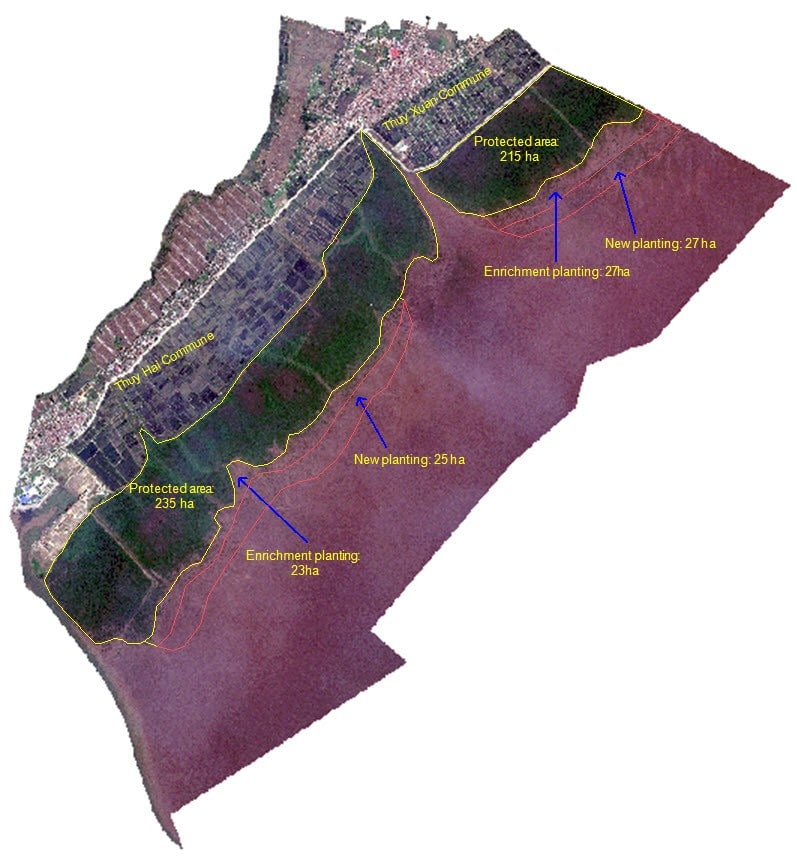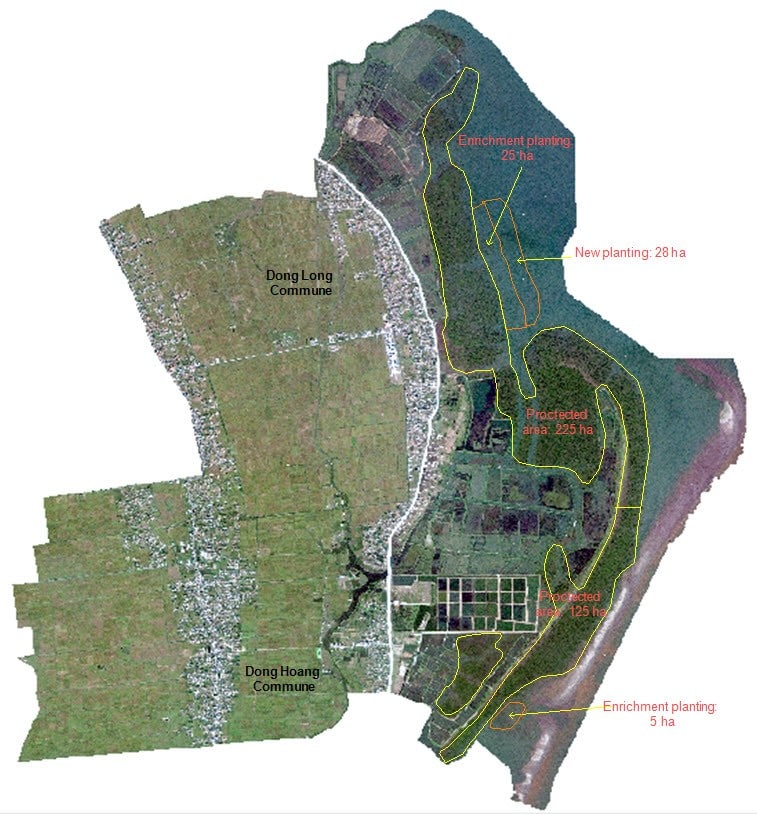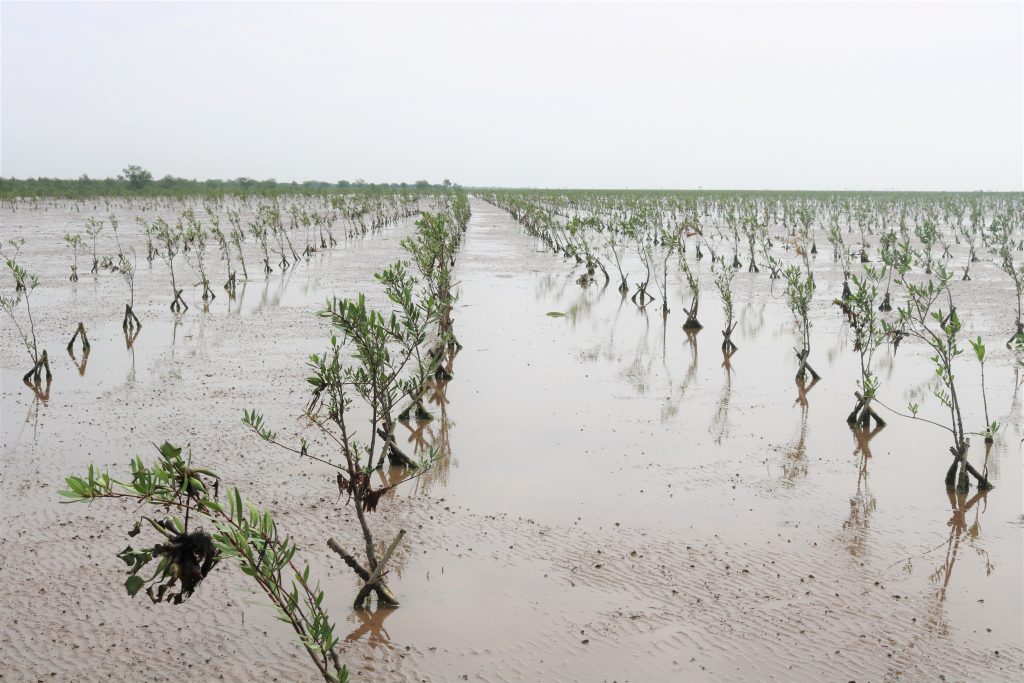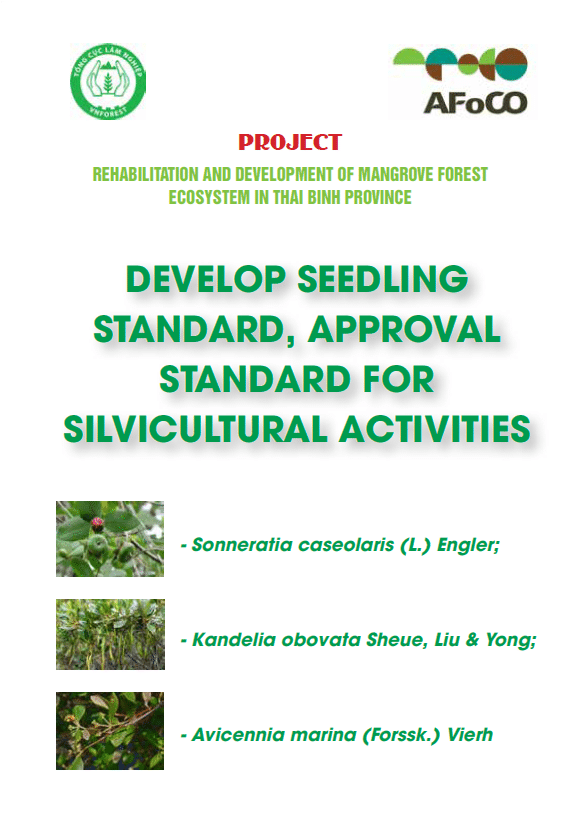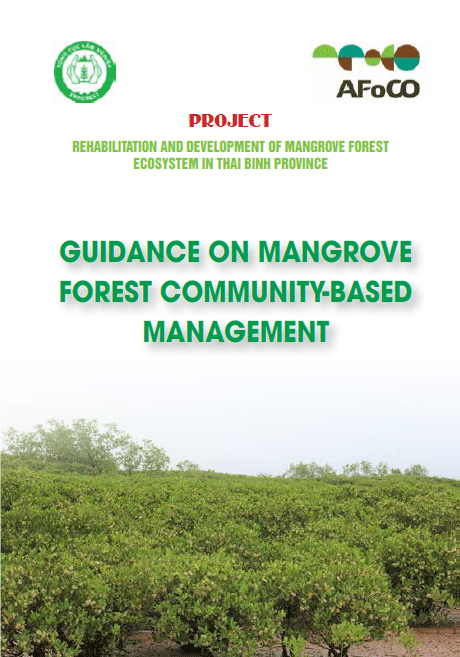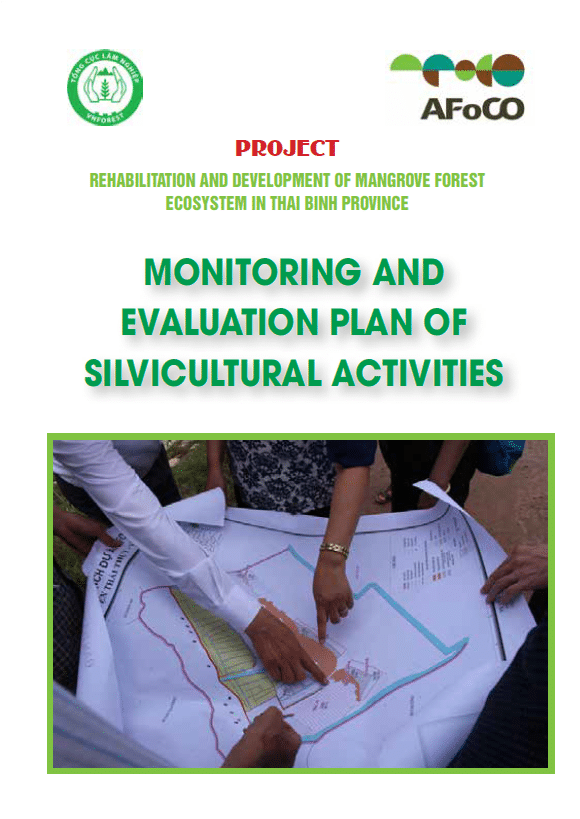This article examines the progress of the project ‘Rehabilitation and Development of Mangrove Forest Ecosystem in Thai Binh Province, Vietnam’ under the AFoCO Landmark Program. The first objective of the project, ‘Afforestation, Enrichment and Protection of Existing Mangrove Forest’ is highlighted in this article. The information used is based on the project documents and annual reports of the project. Other sources such as the IPCC and NDC reports of the country were also referenced.
Background
Vietnam is one of the emerging economies of Asia with a growing population of 96.49 million and a GDP of US $ 241.04 million. The country is bordered by China to the north, the South China Sea to the east and south, and Cambodia and Laos to the west. The country has a very long coastline of 3,444 km running from north to south with many beautiful beaches of clearwater and white sands. The current forest cover of the country is estimated at around 37 % of the total land area. By 2030, the country envisions increasing forest coverage to 45%, and also protected coastal forest areas to 380,000 ha, including mangrove afforestation of between 20,000 to 50,000 ha.
According to the report on Vietnam’s Nationally Determined Contributions (NDCs), the average temperature in Vietnam has increased by approximately 0.5⁰C and the sea level has risen by about 20cm over the past 50 years. Extreme climate events have increased both in frequency and intensity. Climate change has made hazards, especially storms, floods, and droughts, more intense. The mangrove forests in provinces like Thai Binh have been degrading over the years mainly because of land-use changes, poor management, and increased frequency of annual floodings and typhoons. The Intergovernmental Panel on Climate Change (IPCC) Special Report (2018) on Ocean and Cryosphere in Changing Climate reported that risk related to sea-level rise (including erosion, flooding, and salinization) is expected to significantly increase by the end of this century along all low-lying coasts in the absence of major additional adaptation efforts. One of the adaption measures under the NDC is to protect, restore, plant, and improve the quality of coastal forests, including mangroves, especially in coastal estuaries and the Mekong and Red River deltas.
Project sites in Thai Binh Province
Thai Binh is a coastal province in the Red River Delta of Vietnam with a total land area of 154,650 hectares. The province has seven districts of which two are coastal – Tien Hai and Thai Thuy. The coastline of these districts is around 54 km and the coastal sandy (poor soil) and coastal warp (rich in humus) are the two major groups of soils found in these areas. The forest of the province is mainly composed of mangrove species that traditionally provided timber, firewood, non-wood forest products including rich habitat for flora and fauna species amongst others. These mangrove forests protect local coastal areas by reducing the impacts of flooding, erosion, and salinization of coastal areas. There were also large areas of mangrove forest of poor quality with low density that limit its role in coastal area protection and conservation. By maintaining healthy coastal ecosystems, like mangroves, seagrass beds or coral reefs, can provide soft protection and other benefits according to the IPCC special report on Ocean and Cryosphere in Changing Climate. The report also cited that the failures of mangrove restoration projects were due to poor choice of mangrove species, planting in the wrong tidal zones, and in areas of excessive wave energy.
The Vietnam Administration of Forestry (VNFOREST) proposed a project titled “Rehabilitation and Development of Mangrove Forest Ecosystem in Thai Binh Province, Vietnam” in 2014 under the Landmark Program of ASEAN-ROK forest partnership for a period of ten years. The main objectives of the project are (i) afforestation, Enrichment and Protection of existing mangrove forest; and (ii) training for capacity building and communication. This article examines its first objective only.
Stakeholder engagements
In line with the government policies, regulations, and the project manual, the project management boards (PMD) and the project steering committee (PSC) was constituted with clear mandates. The PMD at the central government level was responsible for capacity building and advocacy, while the PMD at the local government level was responsible for forest planting and silviculture management and PSC to oversee implementation of the project (Photo A). The institutions and organizations involved are VNFOREST, Department of Agriculture and Rural Development, AFoCO, and the Research Institute for Forest Ecology and Environment (RIFEE) from the Vietnamese Academy of Forest Sciences. Technical guidelines and support for mangrove afforestation and silviculture management practices were provided by RIFEE, who was involved in the implementation of mangrove forest restoration, rehabilitation, and research projects funded both by the local government and international organizations (e.g, UNEP and FAO) in Vietnam from 2002 through 2015. For the protection of existing mangrove forest areas, a contract agreement was signed with the members of the four communes in the two participating districts of Thai Binh.
-
Participants of the Project Steering Committee Meeting, 2019
Mangrove afforestation and the enrichment and protection of existing mangrove forests in Thai Binh Province
The project site maps for the afforestation (80 ha), enrichment (80 ha) and protection (800 ha) areas of the two districts covering four communes (Thuy Hai and Thuy Xuan of Thai Thuy district, and Dong Long and Dong Hoang of Tien Hai district) were produced based on detailed field surveys carried out in 2015 and 2016 (Maps 1 and 2). The seedlings for afforestation were produced at upstream nurseries and transported by boat through the river canals to the plantation sites. The plantations were carried out at low tide from the end of March through the end of September for three years between 2016 and 2018. The species selected were Sonneratia caseolaris, Kandelia obovate, and Avicennia marina. One of the adaptation measures under the NDCs is to protect, restore, plant, and improve the quality of coastal forests, including mangroves, especially in coastal estuaries and the Mekong and Red River deltas.
-
Map 1. Thai Thuy District -
Map 2. Tien Hai District
Sonneratia caseolaris is grown widely in Vietnam for windbreaks, coastal area protection, and wood products. It flowers in the months of March and April and grows to a height of 10 to 15 meters and develops a wide canopy with a good root system. Kandelia obovata grows to a height of 4 to 8 meters in medium to high tide areas and can tolerate high salinity from 20 % to 34 %, withstand extreme temperatures. It flowers in the months of May and June and is widely promoted in Vietnam to protect the sea and river dikes, and as animal fodder. Avicennia marina is distributed throughout the country to protect the sea and river dikes, newly developed warp, and grows well in areas of low to medium tide zones. It grows to a height of 2 to 3 meters, develops aerial roots, and can tolerate salinity and extreme temperatures. It flowers in the months of April and May, and the wood is used for paper pulp production, and leaves are important sources of food for shrimps.
According to some project reports, risks for mangrove plantation failures (survival rate estimated around 50 %) were very high primarily because of poor soils, high tides, shipworm infestations, and frequent sea storms. These seedlings were certified by RIFEE based on the standards set in the current regulations and technical guidelines. The seedlings were planted at a distance of 2 x 3 meters, approximately 1,667 seedlings/h.
-
Plantation at Thuy Xuan commune in 2016 -
Same plantation at Thuy Xuan commune in 2019
Bamboo stakes were used to help seedlings to establish firm roots and also to minimize damage to seedlings by natural forces such as light wind and waves. Afforested areas established in 2016, 2017, and 2018 were 20 ha, 30 ha, and 30 ha respectively. During the periods of low tide, the newly established sites were surveyed, and the poorly grown or dead seedlings were replaced under the supplementary planting provisions, approximately replaced at the rate of 666 seedlings/ha. Other silviculture management practices included trash collection, removal of shipworms, and adjustments of bamboo stakes.
On a regular basis, the existing mangrove forest areas (800 ha) were patrolled by groups of community members as stipulated in the contract agreement, to discourage forest degradation and deforestation by local farmers. The local farmers were also educated and informed on the benefits and values of healthy mangrove forests through village meetings, training, local publications (see photos below), and visits made by the members of the local PMD.
-
Nursery Guidelines -
Seedling Standards -
Plantation Guidelines -
Community-based Forest Protection -
Monitoring & Evaluation Plan
(Guidelines and manuals published by RIFEE)
Some lessons
The objectives of the project “Rehabilitation and Development of Mangrove Forest Ecosystem in Thai Binh Province, Vietnam” were designed to support and contribute to how to improve and manage mangrove forest ecosystem services of coastal areas. The project promoted native mangrove species that were locally adapted and grown for many years across the country. These species not only provided protection of the coastal areas but also contributed to the economic activities of local farmers living in the coastal districts. Directly or indirectly, the project also contributed to one of the adaptation measures outlined in the NDC report like ecosystem services health, biodiversity conservation, genetic resource conservation, and protection of species at risk of extinction. A bigger challenge, however, is how to protect and maintain existing and newly established mangrove forests in the years to come since these species provide multi-benefits. Probably in addition to education and awareness, one option is to explore alternative livelihood means for the local farmers so that lush green mangrove forest is sustained.
Contributed by Soozin Ryang, Nguyen Tuong Van and Chencho Norbu


